Six Architects on their Dream Desks
– Roz Barr, Biba Dow, Elizabeth Hatz, Emma Letizia Jones, Stephanie Macdonald and Helen Thomas
Drawing Matter recently acquired this design for a table, below. Although the work’s last sale in 1972 attributed the drawing to Thomas Chippendale, we are (perhaps wishfully) hoping that it might be an architect’s own design for desk.
The sheet set off a flurry of chatter about the platonic spaces and tables for working, from Antonello’s painting of St Jerome in his study, hanging in London’s National Gallery, to Lina Bo Bardi’s magical rendering of an architect’s room. Curious to know what form such a place might take in today’s working life, we asked six very busy architects to spend no more than three minutes imagining their ideal desks.
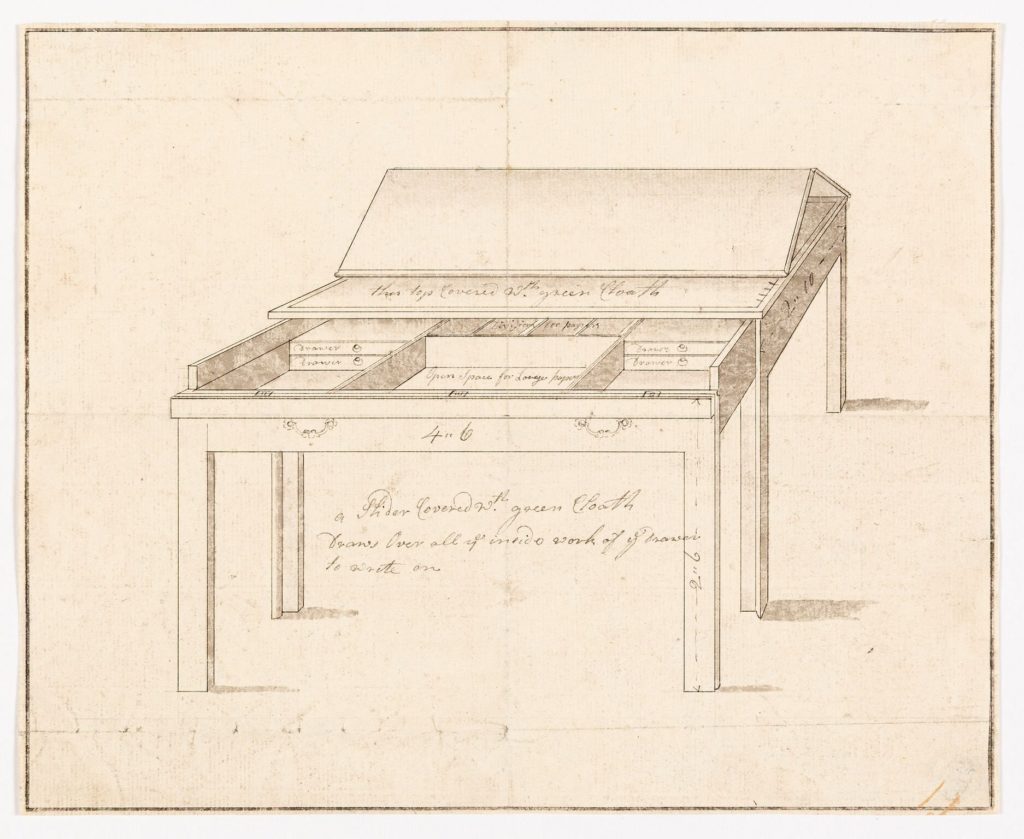
1: Stephanie Macdonald
My immediate thoughts are that I need sunlight and the play of shadows across my desk or in my architect’s room, and a view of trees and dense planting catching sunlight or rain or wind and attracting birds. There’s always a bunch of books close-by on shelves or stacked: currently on Barbara Hepworth’s hospital drawings and Rembrandt’s etchings, Bruther, Brandelhuber. There are sketchbooks and conté crayons and charcoal, but perhaps that’s reflecting a particular moment in time. This is all real but would also be in my ideal, and I’d add more paintbrushes pastels and blocks of paper. There’s a board on the wall of site pictures, drawings and reference images pinned or masking-taped up. The rest of the walls have paintings and drawings on them collected from friends. Over the desk is a big Corb lamp that lights up and down and is able to move around to light the desk alone or more of the room. There is a bench for people to come and sit around the desk. Shelves are full of pieces of material metal stone, timbers, models and objects we’ve made, those we’ve found and plants.
My desk is always a little messy and in action, as preferred, and things that shouldn’t be there sometimes migrate there – always have done.
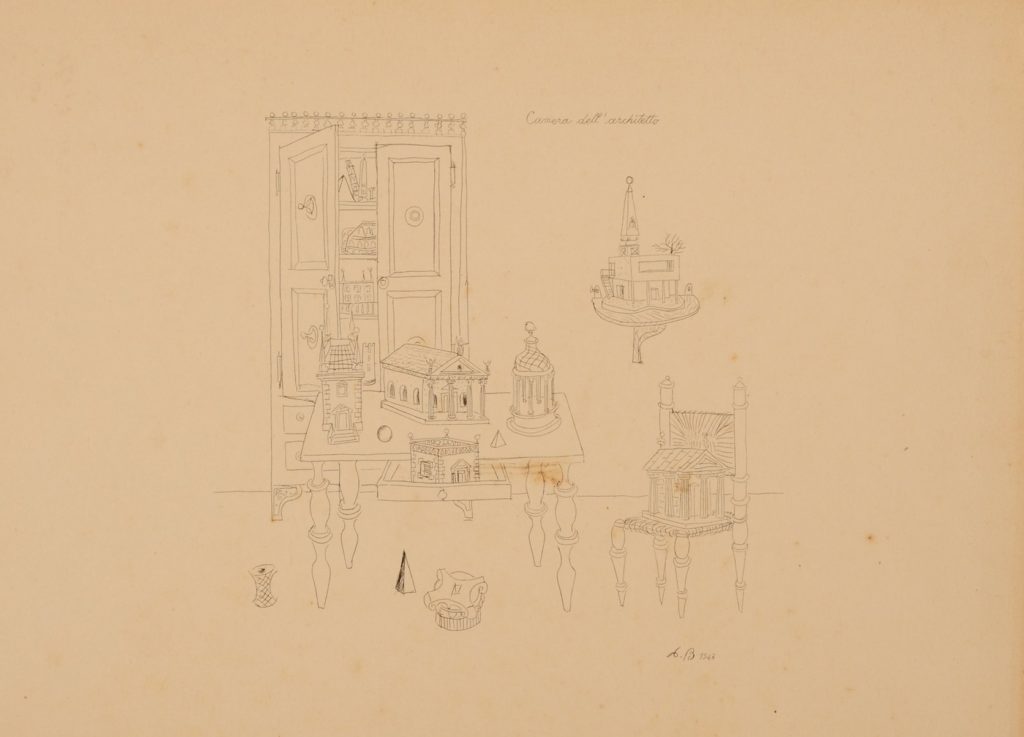
2 – Emma Letizia Jones
My ideal desk is something large, antique and heavy but not too heavy, an antique timber desk with side drawers, not as heavy as Victorian, but nicely Georgian/Biedermeier. Biedermeier preferably. Elegant and classical but with some gravitas. Something in green leather on top and cherry wood, perhaps.
On it, laptop obviously. A few books I need at hand propped up on one end. Maybe a vase with flowers and some postcards standing against it, and a couple of display objects. Maybe some old nineteenth-century building tools, like a tape measure and a couple of moulds. Ideally it would be kept nice and neat, but in reality I would have printouts, books and papers all over the place. And coffee cups.
From my desk I would face a window, hopefully looking out over some tall trees and city roofs beyond (I’d like to be quite high up). Alternatively a wall of green. Around me I’d hopefully have bookshelves lining the walls, a nice rug and a comfy place to sit (the desk would be in a library). There might also be some objects and models placed around the shelves. Wish I was there right now.
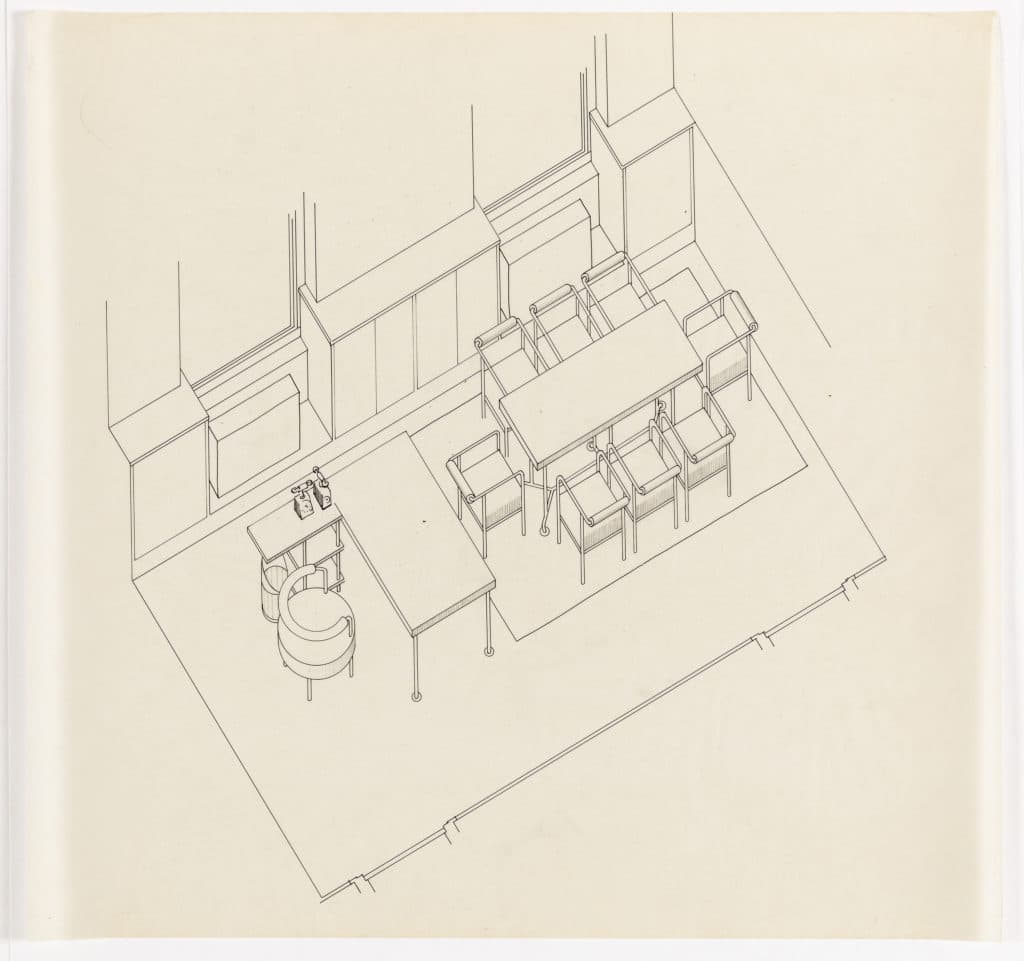
3 – Helen Thomas
I would love to have a lectern to read at, even better if there’s somewhere to put a laptop, surrounded by lower tables to lay books out on, with a larger computer screen. I had an old banker’s table when studying for my A-levels – that was great: very big with pull-out tablets on the side that I could also put notes and books on.
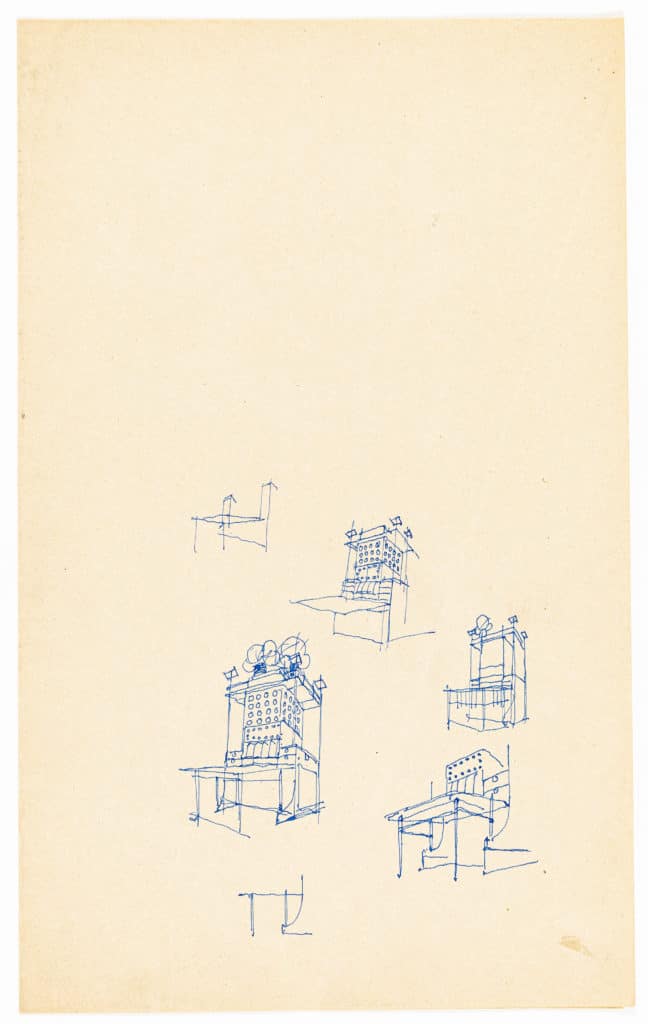
4 – Biba Dow
I thought about this and started sketching, and realised that my ideal desk is the one we have just built in our Cornish house.
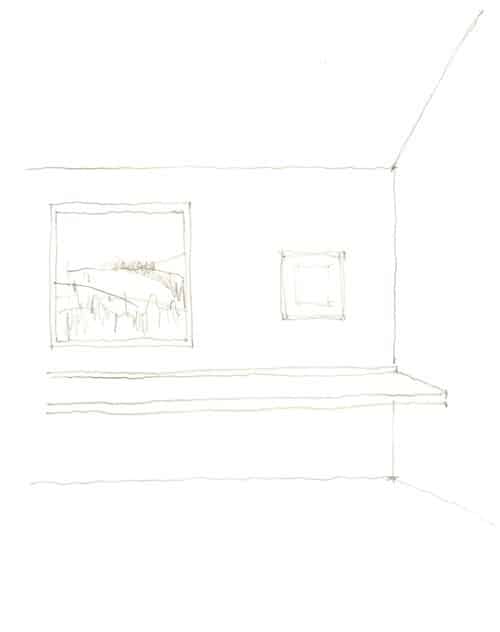
It is a big, clean expanse of desk, lots of space to spread out, and it has a window to look out of and a picture to look at. In Cornwall, the window overlooks the village which climbs a steep hill, with a wooded valley behind, and the print on the wall is a very simple and graphic line drawing of a harbour. The desk is a very simple deep shelf of sapele, bracketed underneath and with an upstand at the back so you can pass cables behind it, so the desk feels like it’s floating. The room is tall and quite bare, so when you sit there your mind feels free too!
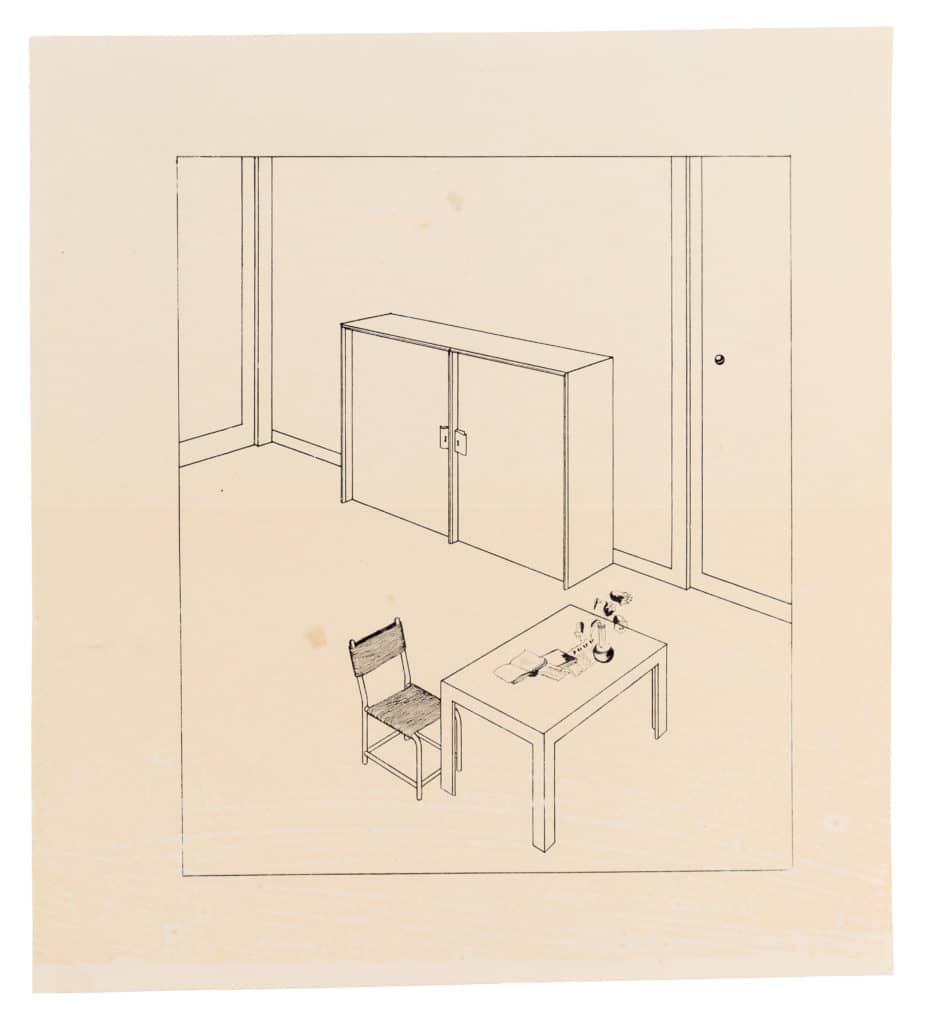
5 – Roz Barr
My Ideal Desk is high and long. I like a desk I can perch at on a swivel chair with arms, and that is also high enough for me to stand at. It would have a Linoleum top with a large cutting mat on one side and a set of drawers hanging under it on the left to keep endless pencils, knives and masking tape. I need a large wall-mounted Anglepoise – or if possible an industrial Asplund! I like space, and keeping a clear surface helps me work, but I also like piles of books and things I gather, so the bigger the surface the better.
What’s on it? The usual things: a roll of yellow tracing paper, a pad of watercolour paper for making maquettes, iPad for music and radio. A mug of hot water in the day and a heavy tumbler of a nice, clear Malt if late at night. And maybe a small vase of flowers.
Where is it? Sitting in front of a huge picture window with a view into a garden that is dense with plants, trees and birds. There would be door leading into the garden so that my dog could venture in and out, and on a sunny day it would be left open. I like to move around when I work, the ability to prune a plant or just breathe for a moment’s distraction is always good.
What’s under it? A thick, thick wool rug – one that my bare feet sink into and Lady Barr-barr (the Spaniel) can lie out on.
BLISS.
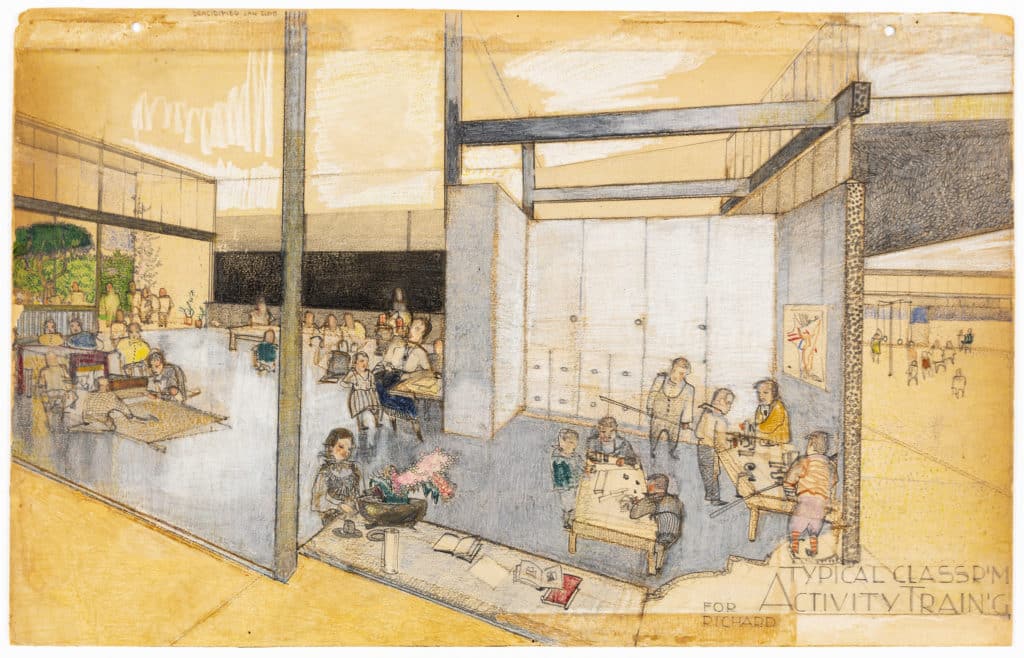
6 – Elizabeth Hatz
Table (n) late 12c, ‘board, slab, plate’, from Old French table ‘board, square panel, plank; writing table; picture; food, fare’ (11c), and late Old English table ‘writing tablet, gaming table’, from Germanic tabal (source also of Dutch tafel, Danish tavle, Old High German zabel ‘board, plank’, German Tafel). Both the French and Germanic words are from Latin tabula: ‘a board, plank; writing table; list, schedule; picture, painted panel’, originally ‘small flat slab or piece’ usually for inscriptions or for games (source also of Spanish tabla, Italian tavola), of uncertain origin, related to Umbrian tafle ‘on the board’. (…)
A kitchen from the 1840s for King Carl XIV Johan’s military camp, was equipped in the 1940s with massive wooden worktops, fixed to the outer walls and lit by six tall windows.
The generous and hardy surface, on three sides of the room, takes the shifting light over the day, giving a range of different spaces for drawing, reading, cutting, sculpting, assembling, doubting, disassembling, collaging, reflecting, model-making, ranging, pondering, sketching, measuring. And looking.
The surface carries traces of years of cooking, cutting, chopping, baking – and painting, chiselling, engraving – as it went from kitchen to artist studio. Unassuming, robust and appropriate, this tabletop carries the physical marks of hand work, but transcends the intensity of haptic memory. This forms a sort of depth in the layers of inflicted marks, wounds, cuts, stains and paint patches, like the calm resilience of an experienced build, an allowing embodiment of use.
Every object thereupon, is thus entering into homes of previous situations. Everything is particular, but nothing really precious.
The desk without objects is free but not empty. Open but not a void. Things are changing place; negotiating positions, in a continuing alteration of the ordinary existing. It is not primarily aesthetic, it is always about relations, a type of negotiating conversation.
At times, sounds are muted when things have been taken down, stored away – a momentary clearing, before the next conversation starts. This wooden palimpsest is a warm reminder of everything’s futility and endurance.
Outside the windows, two teenage deer eat fallen leaves from the huge ash tree, carelessly contemplating the human occupant of this wooden house. The low hooting of the ships in the harbour, some bus humming far away, while the nightingale performs its legato, ad libitum…
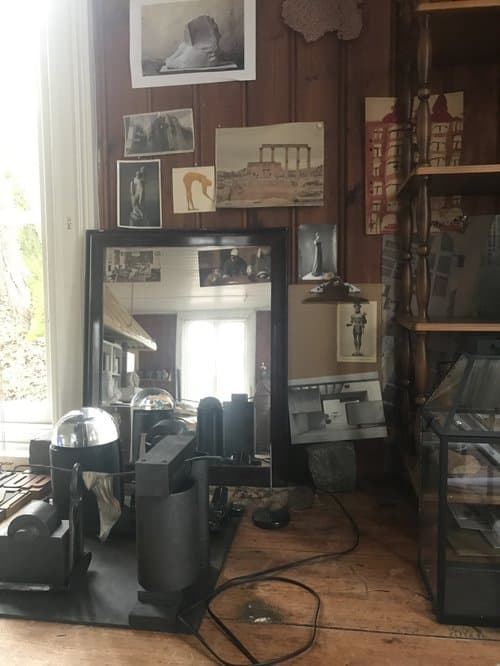
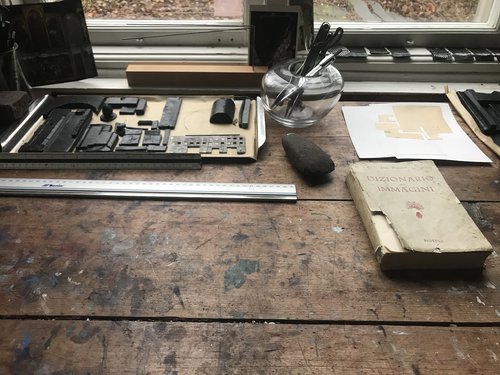
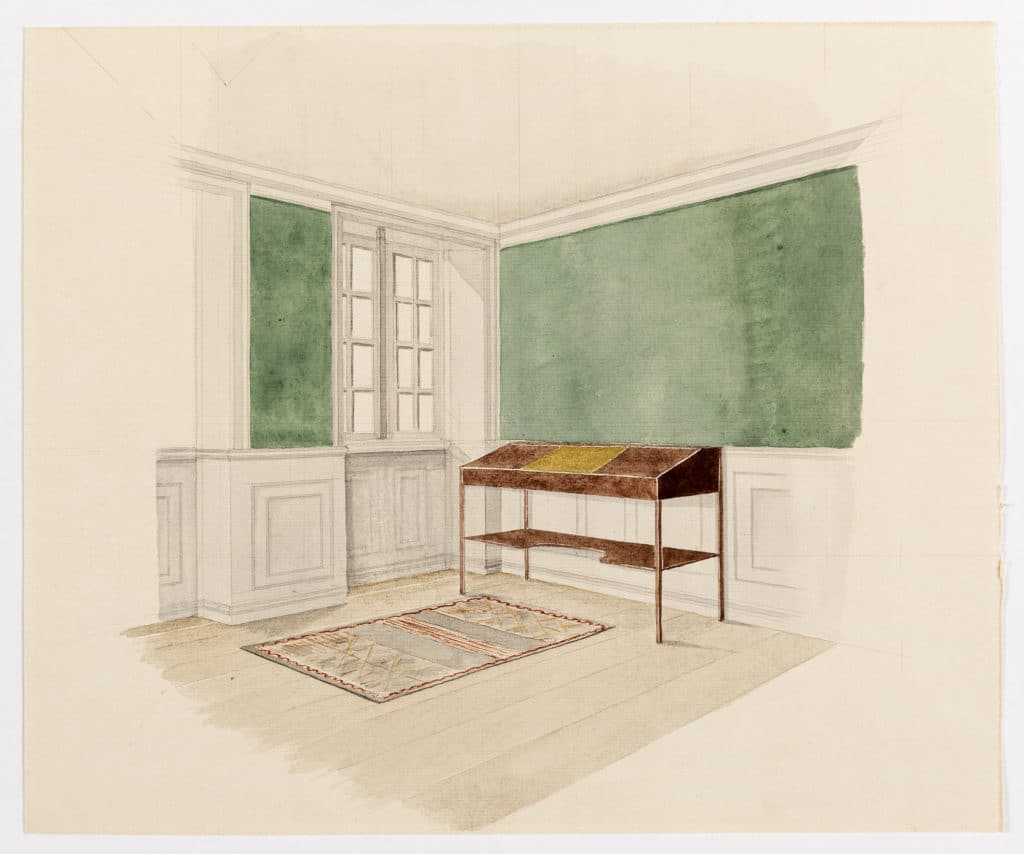

– Rosa Nussbaum